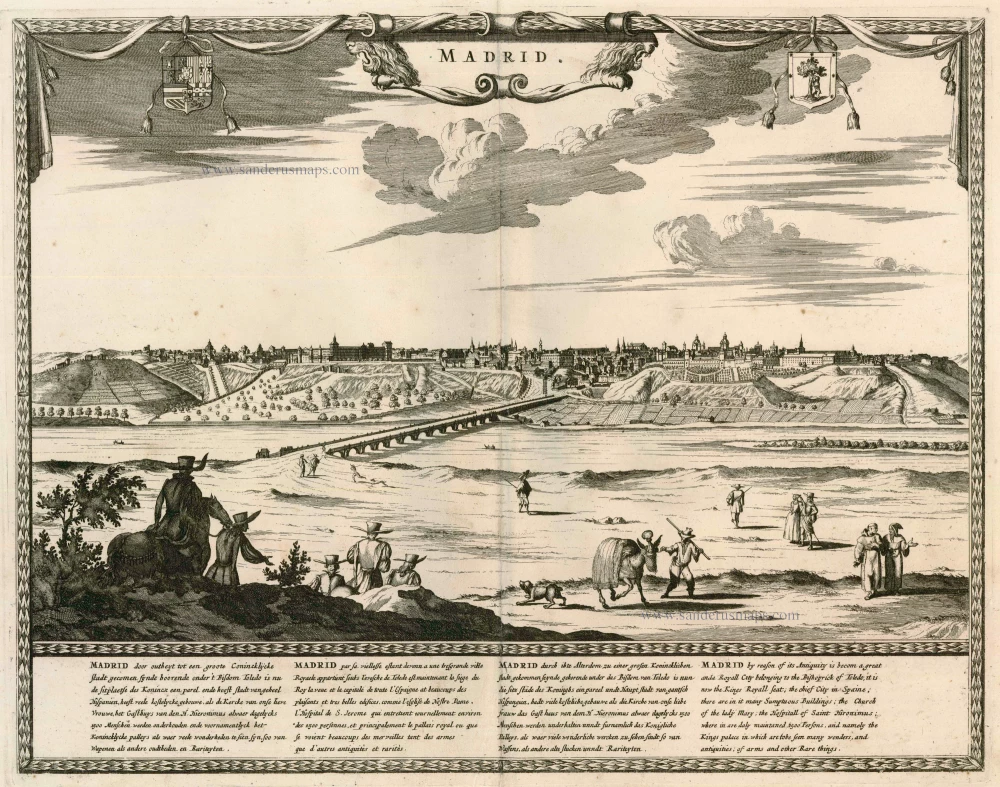Optical view of the Zarzuela Palace near Madrid, by Gabriel Huquier. ca. 1770
Optical View (French: Vue d'optique)
An optical view is a type of 18th-century hand-coloured engraved print to be viewed through a special optical device. It depicts architectural, city, or landscape scenes and is designed to give a strong illusion of depth and perspective when seen through a magnifying lens or viewing box. Characteristic of an optical view is the reversed inscription: The titles or captions were often printed backwards, because the viewing device used a mirror that would flip the image right-side up again. The artists enhanced depth with bold converging lines and bright colours. The optical views were used for popular entertainment and education, a way for people to "travel" visually. They originated in France and England around the 1740s and became fashionable across Europe. They were often sold by travelling print sellers or displayed in fairs and parlours.
Gabriel Huquier (1695-1775)
Gabriel Huquier was a prominent engraver, print publisher, and art dealer in 18th-century Paris. He played a significant role in disseminating Rococo ornamental design and the works of leading French artists of his time. He began his career as an engraver but quickly became one of Paris’s most important publishers of ornamental prints—the visual language of the Rococo style.
Vue Perspective du Palais Royal de la Sarcuela, maison de plaisance du Roy d'Espagne.
Item Number: 32388 Authenticity Guarantee
Category: Antique maps > Europe > Spain and Portugal
Optical view of the Zarzuela Palace near Madrid, by Gabriel Huquier.
Title: Vue Perspective du Palais Royal de la Sarcuela, maison de plaisance du Roy d'Espagne.
A Paris chés Huquier fils, Graveur, rue St. Jacques, au dessus de celle des Mathurins, au Gd St Remy.
Date: ca. 1770.
Copper engraving, printed on paper.
Image size: 240 x 390mm (9½ x 15¼ inches).
Sheet size: 315 x 455mm (12½ x 18 inches).
Verso: Blank.
Condition: Original coloured, excellent.
Condition Rating: A+.
Separate publication.
Optical View (French: Vue d'optique)
An optical view is a type of 18th-century hand-coloured engraved print to be viewed through a special optical device. It depicts architectural, city, or landscape scenes and is designed to give a strong illusion of depth and perspective when seen through a magnifying lens or viewing box. Characteristic of an optical view is the reversed inscription: The titles or captions were often printed backwards, because the viewing device used a mirror that would flip the image right-side up again. The artists enhanced depth with bold converging lines and bright colours. The optical views were used for popular entertainment and education, a way for people to "travel" visually. They originated in France and England around the 1740s and became fashionable across Europe. They were often sold by travelling print sellers or displayed in fairs and parlours.
Gabriel Huquier (1695-1775)
Gabriel Huquier was a prominent engraver, print publisher, and art dealer in 18th-century Paris. He played a significant role in disseminating Rococo ornamental design and the works of leading French artists of his time. He began his career as an engraver but quickly became one of Paris’s most important publishers of ornamental prints—the visual language of the Rococo style.









